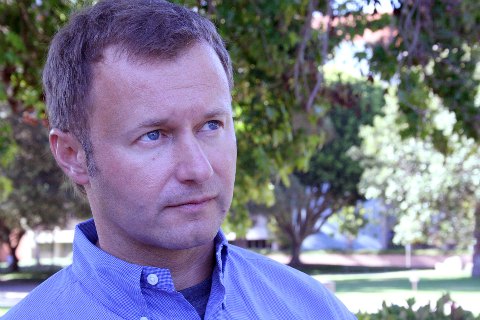Spread Of Oil from Deepwater Horizon Spill Predicted by Researcher
UCSB Scientist Successfully Forecasts When and Where Oil Washed Ashore
In the weeks after the Deepwater Horizon accident, as plumes of oil rose from the depths of the Gulf of Mexico to form vast slicks on the sea surface, Igor Mezic of the University of California, Santa Barbara, decided to figure out a better way of predicting how that oil would spread. Using his new method, Mezic successfully forecast where and when spilled oil would wash ashore.
“We predicted where the oil was going to go,” says Mezic, a professor of mechanical engineering who studies fluid dynamics. “We were able to do 3-day predictions pretty accurately.”

Mezic passed on his forecasts to the U.S. Coast Guard and was flown down to the Gulf of Mexico by a company involved in the cleanup.
“We were on the phone with people, several days in advance, telling them where the oil was going to go,” says Mezic, who began the work after watching coverage of the oil spill. “I looked at this problem on the TV and thought I could do something about it,” he says. “I felt there could be a better set of theories to predict how oil will move.”
In a paper published online today in the prestigious journal Science, Mezic, together with Sophie Loire, a postdoctoral fellow who works with Mezic and colleagues at the software development company Aimdyn, Inc. in Santa Barbara and at NASA’s Stennis Space Center in Mississippi, describe how they predicted the movement of oil spilled into the Gulf of Mexico after an explosion aboard the Deepwater Horizon rig on April 20.
Mezic and his colleagues successfully predicted where and when oil would wash ashore in parts of the Mississippi River Delta, and later, on the white-sand beaches of Pensacola, Florida. They then forecast that the spill would move farther east toward Panama City Beach. Their predictions were accurate to within a couple of miles of NOAA’s assessments of where the spilled oil actually ended up.
Mezic says better forecasts of oil movement will help make cleanup efforts more efficient and provide better information for people who may be affected by a spill.
It’s not easy to predict how an oil slick will spread across the ocean, Mezic says, because of the large scale involved and the complex and constantly changing movement of water at the sea surface, which is driven primarily by wind.
Mezic’s new approach to the problem is based on computations that describe how slicks of oil tend to be stretched into filaments by water movement. To generate predictions about the spread of oil after the Deepwater Horizon accident, Mezic and his colleagues incorporated forecasts of sea surface conditions in the Gulf of Mexico from a U.S. Navy model.
Mezic says further refinements of this new methodology could be done in order to predict the spread of many other kinds of contaminants, such as ash spewed out of an erupting volcano, fallout from a nuclear accident, or warm air seeping into a climate-controlled building.
“It’s pretty universal,” says Mezic, who is also part of the Institute for Energy Efficiency at the University of California, Santa Barbara. “It could be applied to many different kinds of situations where a contaminant or heat is moved around by a liquid or gas.”
– – –
The College of Engineering at the University of California, Santa Barbara is a global leader in bioengineering, chemical and computational engineering, materials science, nanotechnology and physics. The university boasts five Nobel Laureates (four in sciences and engineering) and one winner of the prestigious international Millennium Technology Prize, and its professors, students and staff thrive in a uniquely-successful interdisciplinary and entrepreneurial culture.
